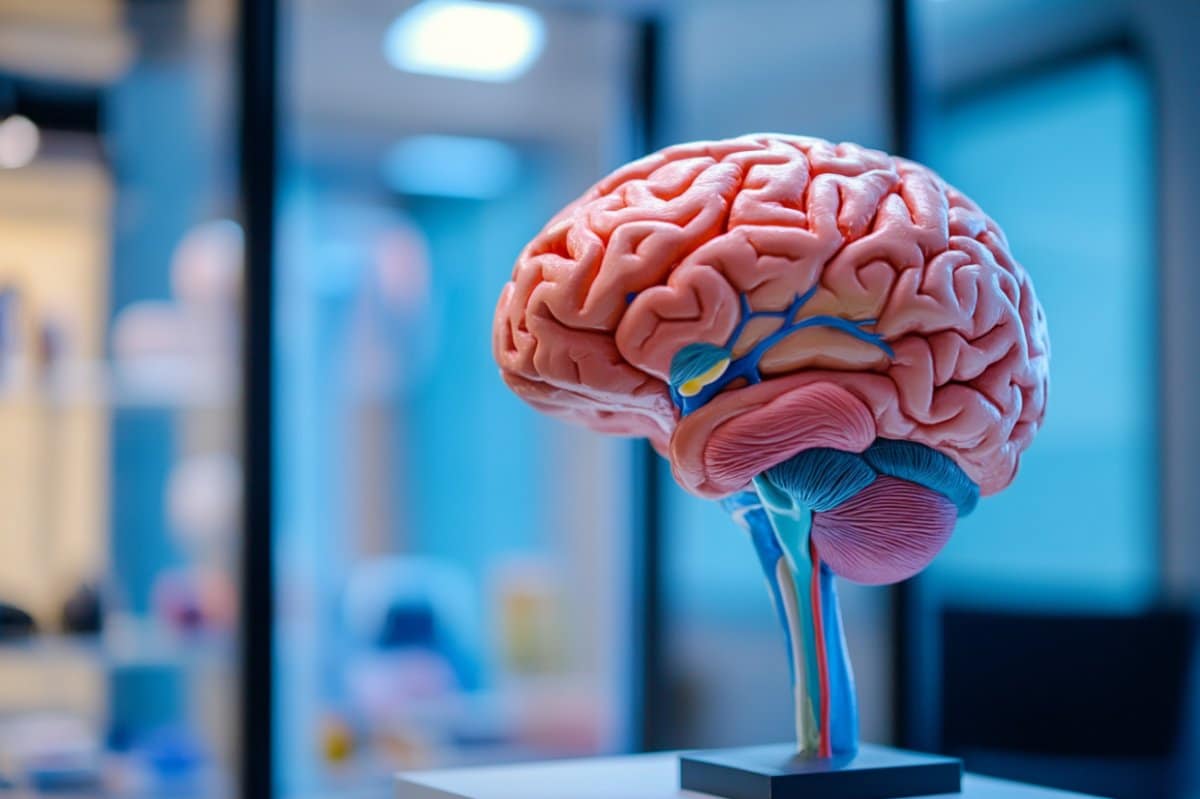Summary: A new study reveals that all human senses—sight, hearing, taste, and touch—activate the same deep brain regions linked to consciousness when attention is sharply focused. Using fMRI data from over 1,500 healthy participants, researchers found that sensory input, regardless of the type, engages the midbrain reticular formation and central thalamus.
These areas are crucial for regulating alertness, attention, and awareness. The surprising discovery highlights a shared subcortical network for sensory attention, deepening our understanding of how consciousness is organized in the brain.
Key Facts:
- Shared Brain Activation: All senses activated the same deep brain regions when participants paid close attention.
- Focus Matters: Activity in the midbrain and thalamus was strongest during tasks requiring sharp focus.
- Therapeutic Potential: The results could lead to better treatments for ADHD and consciousness disorders.
Source: Yale
Humans perceive and navigate the world around us with the help of our five senses: sight, hearing, touch, taste and smell.
And while scientists have long known that these different senses activate different parts of the brain, a new Yale-led study indicates that multiple senses all stimulate a critical region deep in the brain that controls consciousness.
 The key to stimulating the critical central brain regions, they found, were the sudden shifts in attention demanded by the tasks. Credit: Neuroscience News
The key to stimulating the critical central brain regions, they found, were the sudden shifts in attention demanded by the tasks. Credit: Neuroscience News
The study, published May 15 in the journal NeuroImage, sheds new light on how sensory perception works in the brain and may fuel the development of therapies to treat disorders involving attention, arousal, and consciousness
In the study, a research team led by Yale’s Aya Khalaf focused on the workings of subcortical arousal systems, brain structure networks that play a crucial role in regulating sleep-wake states.
Previous studies on patients with disorders of consciousness — such as coma or epilepsy — have confirmed the influence of these systems on states of consciousness.
But prior research has been largely limited to tracking individual senses. For the new study, researchers asked if stimuli from multiple senses share the same subcortical arousal networks. They also looked at how shifts in a subject’s attention might affect these networks.
For the study, researchers analyzed fMRI (functional magnetic resonance imaging) datasets collected from 1,561 healthy adult participants as they performed 11 different tasks using four senses: vision, audition, taste, and touch.
They made two important discoveries: that sensory input does make use of shared subcortical systems and, more surprisingly, that all input — regardless of which sense delivered the signal — stimulates activity in two deep brain regions, the midbrain reticular formation and the central thalamus, when a subject is sharply focused on the senses.
The key to stimulating the critical central brain regions, they found, were the sudden shifts in attention demanded by the tasks.
“We were expecting to find activity on shared networks, but when we saw all the senses light up the same central brain regions while a test subject was focusing, it was really astonishing,” said Khalaf, a postdoctoral associate in neurology at Yale School of Medicine and lead author of the study.
The discovery highlighted how key these central brain regions are in regulating not only disorders of consciousness, but also conditions that impact attention and focus, such as attention deficit hyperactivity disorder.
This finding could lead to better targeted medications and brain stimulation techniques for patients.
“This has also given us insights into how things work normally in the brain,” said senior author Hal Blumenfeld, the Mark Loughridge and Michele Williams Professor of Neurology who is also a professor in neuroscience and neurosurgery and director of the Yale Clinical Neuroscience Imaging Center.
“It’s really a step forward in our understanding of awareness and consciousness.”
Looking across senses, this is the first time researchers have seen a result like this, said Khalaf, who is also part of Blumenfeld’s lab.
“It tells us how important this brain region is and what it could mean in efforts to restore consciousness,” she said.
Other authors include Erick Lopez, a former undergraduate researcher in Blumenfeld’s lab, and collaborators from Harvard Medical School.
Funding: This research was supported in part by funding from the National Institutes of Health.
About this neuroscience research news
Author: Bess Connolly
Source: Yale
Contact: Bess Connolly – Yale
Image: The image is credited to Neuroscience News
Original Research: Open access.
“Shared subcortical arousal systems across sensory modalities during transient modulation of attention” by Aya Khalaf et al. Neuroimage
Abstract
Shared subcortical arousal systems across sensory modalities during transient modulation of attention
Subcortical arousal systems are known to play a key role in controlling sustained changes in attention and conscious awareness.
Recent studies indicate that these systems have a major influence on short-term dynamic modulation of visual attention, but their role across sensory modalities is not fully understood.
In this study, we investigated shared subcortical arousal systems across sensory modalities during transient changes in attention using block and event-related fMRI paradigms.
We analyzed massive publicly available fMRI datasets collected while 1561 participants performed visual, auditory, tactile, and taste perception tasks.
Our analyses revealed a shared circuit of subcortical arousal systems exhibiting early transient increases in activity in midbrain reticular formation and central thalamus across perceptual modalities, as well as less consistent increases in pons, hypothalamus, basal forebrain, and basal ganglia.
Identifying these networks is critical for understanding mechanisms of normal attention and consciousness and may help facilitate subcortical targeting for therapeutic neuromodulation.